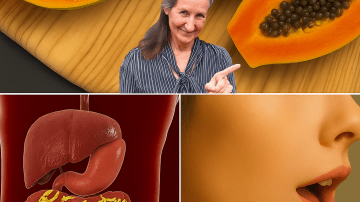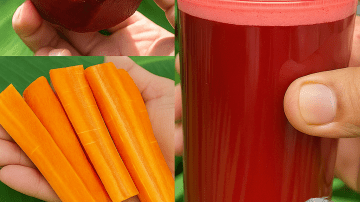You’ve likely pulled it out of your garden, dismissing it as a nuisance. Yet, Goosegrass—known scientifically as Eleusine indica or Cỏ Mần Trầu in Vietnamese traditional medicine—is a resilient grass holding a deep treasure trove of healing properties. This humble plant, thriving in tropical and subtropical regions, is a cornerstone of ancient remedies, now being studied for its profound ability to support detoxification, circulation, inflammation control, and hair health.

The power of Goosegrass is versatile, accessible, and affordable. It’s a testament to the fact that the most potent natural medicine is often found growing freely underfoot. Read on to unlock the 17 proven and traditional uses of this incredible herb, discover how to safely prepare it as a health tonic, and why it should become a non-negotiable part of your holistic health routine.
🔬 The Science of Resilience: Eleusine Indica‘s Core Actions
The therapeutic effects of Goosegrass stem from its unique mix of flavonoids, phenolic compounds, and mineral content, which collectively provide broad-spectrum action across the body’s major systems.
The Three Core Mechanisms:
- Systemic Cleanser: Acts as a diuretic and supports liver detoxification, promoting the elimination of toxins through urine and sweat.
- Anti-Inflammatory/Antimicrobial: Compounds reduce localized swelling and inflammation while fighting microbial invaders.
- Circulatory Stimulant: Supports healthy blood flow and helps regulate vascular function.
✨ 17 Essential Health Benefits of Goosegrass
Part 1: Fever, Immunity, and Internal Cleansing
- Natural Antipyretic (Fever Reducer): Traditionally brewed into a tea to help cool the body and support recovery during colds or infections.
- Supports Liver Health: Bioactive compounds promote liver detoxification, traditionally used for mild hepatitis or fatty liver support.
- Urinary Tract Cleanser: Its strong diuretic effect helps flush out the urinary system, preventing and easing UTIs and supporting overall kidney function.
- Natural Detoxifier: Promotes the elimination of toxins through increased urine output and sweating, aiding systemic cleansing.
- Boosts Immunity: Compounds exhibit antimicrobial effects, helping the body fight bacterial and fungal threats.
Part 2: Circulatory, Pain, and Metabolic Balance
- Regulates Blood Pressure: With mild diuretic and calming properties, goosegrass helps to regulate blood pressure levels naturally.
- Anti-inflammatory Properties: Extracts show anti-inflammatory effects that may help relieve pain and stiffness associated with arthritis and gout.
- May Help with Diabetes Management: Preliminary research suggests it may lower blood sugar levels, making it a potential dietary complement (with medical supervision).
- Supports Digestion: The herb’s slightly bitter nature stimulates digestive enzymes, reducing bloating and aiding people with indigestion or mild constipation.
- Reduces Menstrual Pain: Traditionally used to relieve menstrual cramps and discomfort due to its muscle-relaxing properties.
Part 3: Skin, Hair, and Topical Healing
- Promotes Hair Growth: Traditionally boiled and used as a hair rinse to strengthen hair roots and stimulate new growth.
- Controls Dandruff: Its antimicrobial properties help reduce dandruff and balance the scalp’s microbial environment.
- Improves Skin Conditions: Used topically to treat skin rashes, eczema, and acne, acting as a natural antibacterial and anti-itch solution.
- Relieves Mouth Ulcers: A rinse made from boiled goosegrass can reduce inflammation and pain from canker sores and promote tissue healing.
- Antimicrobial Activity: Confirmed antimicrobial effects make it useful for wound cleansing and minor infections when applied topically.
Part 4: Traditional and Postpartum Support
- Helps Treat Jaundice: In traditional medicine, it is used in herbal mixtures to treat jaundice, supporting liver function and bile flow.
- Postpartum Recovery for Women: Included in herbal baths and teas in Southeast Asia to help cleanse the uterus and strengthen the body after childbirth.

🛠️ The Home Protocol: How to Use Goosegrass Safely
The primary way to harness the benefits of Goosegrass is through a simple decoction (tea).
Method 1: Herbal Tea (Decoction) for Internal Wellness
- Ingredients: 30–50 grams of fresh goosegrass (roots and leaves) OR 1–2 tablespoons dried herb. 500ml of water.
- Simmer: Boil the herb and water, then reduce heat and simmer for 15–20 minutes to extract the beneficial compounds.
- Strain & Drink: Strain the liquid and drink 1–2 cups daily, warm or cold.
Method 2: Hair Rinse and Poultice (Topical Use)
- Hair Rinse: Let the prepared tea cool completely and use it as a final rinse after shampooing. Massage into the scalp for 5 minutes, then rinse with water.
- Poultice: Crush fresh leaves into a paste and apply directly to minor wounds, swelling, or insect bites for antiseptic and anti-inflammatory relief.
🛑 Critical Safety and Usage Notes
- Sourcing is Critical: NEVER harvest Goosegrass from areas treated with pesticides, herbicides, or near busy roads. Use only clean, identifiable plants.
- Medical Consultation: Always consult a healthcare provider before using this herb if you are pregnant, nursing, or taking medications (especially for blood pressure, UTIs, or diabetes). The diuretic and anti-hypertensive effects can interact with drugs.
- Identification: Ensure you correctly identify Eleusine indica.
👑 Final Thoughts: Embrace the Power of the Weed
Goosegrass (Eleusine indica) is a profound testament to nature’s healing power—an unassuming weed with remarkable, multi-faceted benefits. From liver and kidney cleansing to immune boosting and hair growth, this herb is a powerful ally for natural health.
Integrate it into your health routine carefully and reap the rewards of this ancient wisdom. Will you start exploring the power of Goosegrass today?






